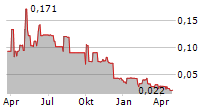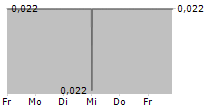
TORONTO, ON / ACCESSWIRE / April 9, 2024 / Velox Energy Materials Inc. (TSXV:VLX) ("Velox" or "the Company") is pleased to announce its project partner, the Hydrogen Storage Research Group at Curtin University has executed a binding funding agreement with the Australian Renewable Energy Agency ("ARENA") on 15 March 2024 for grant funding of A$5,000,000 under the Transformative Research Accelerating Commercialisation ("TRAC") Program for the Kotai Hydrogen Project ("Kotai" or "the Project").
Highlights
A$5 million awarded under a competitive process in the ARENA Transformative Research Accelerating Commercialisation grants program that funds the commercialisation of renewable hydrogen through innovative R&D in renewable hydrogen production, storage and distribution technologies.
The total project funding is approximately A$16.5 million, with cash and in-kind funding contributions of A$7.15 million from Curtin University, and A$4.35 million from Velox.
The Funding will be used to:
Optimise the production of sodium borohydride, and the high-pressure release of hydrogen (~1000 bar);
Design and construction of a Pilot Plant.
Velox Energy Materials has an option over 100% of the IP generated in the Kotai Hydrogen Project.
ARENA Funding and Project Endorsement
The Project is designed to advance a breakthrough hydrogen transport technology into commercial reality. The competitive ARENA grant was awarded in a A$25 million funding round that has targeted the commercialisation of renewable hydrogen through innovative R&D in renewable hydrogen production, storage and distribution technologies.
The total project funding will be approximately A$16.5 million, with cash and in-kind funding contributions of A$7.15 million from Curtin University, and A$4.35 million from Velox over the five-year life of the Project. Curtin's contribution further validates the Project and shows its commitment to derisking and commercialising the technology. The Project will be led by internationally recognised hydrogen storage experts, Professor Craig Buckley and Associate Professor Mark Paskevicius.
The Funding will primarily be used to support the following activities:
Electrochemical production of the sodium borohydride for operations at increasing scale. Includes the regeneration of Sodium Borohydride after the hydrogen has been released, creating a fully closed and recyclable circuit.
Sodium borohydride materials processing and powder handling issues at bulk-scale handling and regulatory adherence. The entire supply chain will also be assessed for chemical recycling opportunities to minimise cost and reagent requirements.
Design and construction of a Pilot Plant that will enable greater scale of commercialisation of Sodium Borohydride and resultant hydrogen gas release production facility.
Kotai Hydrogen Project Overview
The Project involves the research development and deployment of a technology to transport hydrogen as a powder. The powder is a salt called Sodium Borohydride that stores more hydrogen by weight and volume than liquid hydrogen, ammonia or liquid organic hydrogen carriers (LOHCs). Sodium borohydride releases hydrogen when added to water. After hydrogen is released, a by-product powder remains, called sodium borate, which is regenerated back to its hydrogen-rich form using renewable energy.


Comparison of different methods of hydrogen export, costs are in USD from the Future of Hydrogen report prepared by the IEA.
Production of hydrogen through electrolysis uses 57kWh per kg H2 at $0.0685 USD per kWh.
Velox's President and CEO, Simon Coyle, commented:
"Low cost and safe transport and storage of hydrogen is the largest impediment to the growth of the hydrogen sector. Velox, through subsidiary Kotai Energy and its partners, is developing a highly efficient process for the transport and storage of hydrogen.
"The Kotai process being developed utilises an inert powder to store hydrogen, which can then be released on demand wherever it is required. A key feature of the process is the ability to reverse engineer the chemical reaction, allowing the spent waste spent material to be 'reloaded' with hydrogen for future re-use.
"The ARENA funding will be dedicated into optimising the reverse process and growing this through to a commercial product. The five-year funding is expected to rapidly convert lab studies into real world use cases.
"We are thankful to ARENA for their significant support of our shared vision in hydrogen storage and transport. We look forward to continuing to work closely with ARENA and Curtin and achieving our environmental and economical goals."
Australian Renewable Energy Agency (ARENA), CEO Darren Miller, commented:
"Funding early-stage R&D and pushing innovation was at the core of ARENA's mission in supporting the global transition to net zero emissions.
"We're backing Australian technological innovation that helps build our clean industries and underpins our ambitions of becoming a renewable energy superpower.
"ARENA has a strong track record in funding and supporting early-stage innovation. Through our strategic priorities, we have highlighted the importance of renewable hydrogen and low emissions metals growing to become a significant export industry.
"Innovation starts in the lab, and we have the best minds taking our decarbonisation efforts to the next level - to the benefit of all Australians through jobs, lower emissions and cheaper energy."
Hydrogen Storage Research Group's Professor Craig Buckley, commented:
"Curtin University is focused on developing technologies and projects that will reduce greenhouse emissions and progress industry towards Net Zero. We are extremely proud to be associated with this unique, world leading technology."
Link to the ARENA announcement: https://arena.gov.au/news/funding-boost-for-hydrogen-and-low-emissions-iron-steel-research/
Link to the Curtain University Announcement: Hydrogen project wins multi-million-dollar grant to help shift to clean energy - News at Curtin | Curtin University, Perth, Australia
About the Hydrogen Storage Research Group, Curtin University
Hydrogen Storage Research Group team (HSRG) investigates new types of materials for energy storage. The HSRG expertise in this area is used in conjunction with industry partners to provide real-world solutions to research level problems in the energy storage space. Their expertise spans multiple research fields including those of hydrogen rich materials, new battery technologies, and thermochemical energy storage materials.
Professor Craig Buckley leads the HSRG and has over 30 years experience in hydrogen storage research. Professor Buckley is the Australian executive committee member for the International Energy Agency (IEA) Hydrogen Technology Collaboration Program (TCP), and an Australian expert on the IEA Hydrogen TCP Task 40: Energy storage and conversion based on hydrogen. Craig is also a Director of the Australian Association of Hydrogen Energy (AAHE) and a Board member of the Hydrogen Society of Australia.
Mark Paskevicius is an Associate Professor in Physics at Curtin University. He is the Theme Lead for Hydrogen within the Curtin Institute for Energy Transition. He has undertaken experimental research into hydrogen-rich materials and borohydrides for the last 18 years so has immense technical knowledge in materials development and chemical processing.
About Sodium Borohydride (NaBH4)
The hydrogen-rich powder called sodium borohydride (NaBH4) that can store more hydrogen by weight and volume than liquid hydrogen, ammonia or LOHCs. This is due to the fact that when NaBH4 is added to water at its end destination it releases double the hydrogen it contains. Two molecules of hydrogen from the NaBH4, and two molecules of hydrogen from water are all released when NaBH4 turns into sodium borate (NaBO2). This results in an effective gravimetric and volumetric hydrogen density of 21.4 wt.% H2 and 137 kg H2 per m3 for each unit of shipped NaBH4 (assuming a powder packing fraction of 60 %). This means that the volumetric hydrogen density in NaBH4 is 1.28 times greater than ammonia and 1.93 times greater than liquid hydrogen.
Australian Renewables Energy Agency (ARENA) (https://arena.gov.au/)
The Australian Renewables Energy Agency was established by the Australian Government and supports the global transition to net zero emissions by accelerating the pace of pre-commercial innovation, to the benefit of Australian consumers, businesses and workers.
ARENA supports improvements in the competitiveness of renewable energy and enabling technologies, increase the supply of renewable energy in Australia, and to facilitate the achievement of Australia's greenhouse gas emissions targets by providing financial assistance and sharing knowledge to accelerate innovation that benefits all Australians.
About Velox Energy Materials
Velox Energy Materials is a publicly traded energy materials company developing and progressing high-value assets in resource and research-friendly jurisdictions. The Company's priority focus is the advanced NQV Project in Queensland, Australia. The NQV Project hosts the Cambridge Deposit with an CIM compliant Indicated Mineral Resource of 61.33 Mt @ 0.34% V2O5 and 234.6 ppm MoO3 along with an Inferred Mineral Resource of 144.87 Mt @ 0.33% V2O5 (cut-off grade of 0.25% V2O5) and 241.9 ppm MoO3 (Dufresne et al., 2022). The Company is targeting shallow, high-grade mineralisation that can be developed using low-cost mining and processing options.
The Company additionally owns Kotai Energy and the option to acquire 100% of the intellectual property rights associated with the Solid-State Hydrogen Storage Project from Curtin University in Western Australia. Kotai is focused on the commercialisation of technology that can produce high-pressure hydrogen following transport as an inert powder.
In October 2023, the Company acquired a package of tenements that are prospective for lithium in eastern Quebec.
Please visit our website at www.veloxenergymaterials.com.au for further information.
Approved by the Board of Velox Energy Materials Inc.
Simon Coyle
President & CEO
+1 416-214-7577
Investor Relations Contact
Andrew Rowell
Investor Relations - Australia
M: +61 400 466 226
Email: andrew@whitenoisecomms.com
Forward-Looking Statements
Neither the TSX Venture Exchange nor its regulation services provider (as that term is defined in the policies of the TSX Venture Exchange) accepts responsibility for the adequacy or accuracy of this release.
This news release may contain forward-looking statements that are based on the Company's expectations, estimates and projections regarding its business and the economic environment in which it operates. Statements about the closing of the transaction, expected terms of the transaction, the number of securities of Velox Energy Materials that may be issued in connection with the transaction, and the parties' ability to satisfy closing conditions and receive necessary approvals are all forward-looking information. These statements are not guarantees of future performance and involve risks and uncertainties that are difficult to control or predict. Therefore, actual outcomes and results may differ materially from those expressed in these forward-looking statements and readers should not place undue reliance on such statements. Statements speak only as of the date on which they are made, and the Company undertakes no obligation to update them publicly to reflect new information or the occurrence of future events or circumstances, unless otherwise required to do so by law.
The figures noted in this announcement are in USD and sourced from the Future of Hydrogen Report prepared by the IEA. They are not actual costs nor forward-looking statements or financial forecasts and are not indicative of the future performance of the Company.
SOURCE: Velox Energy Materials Inc.
View the original press release on accesswire.com


